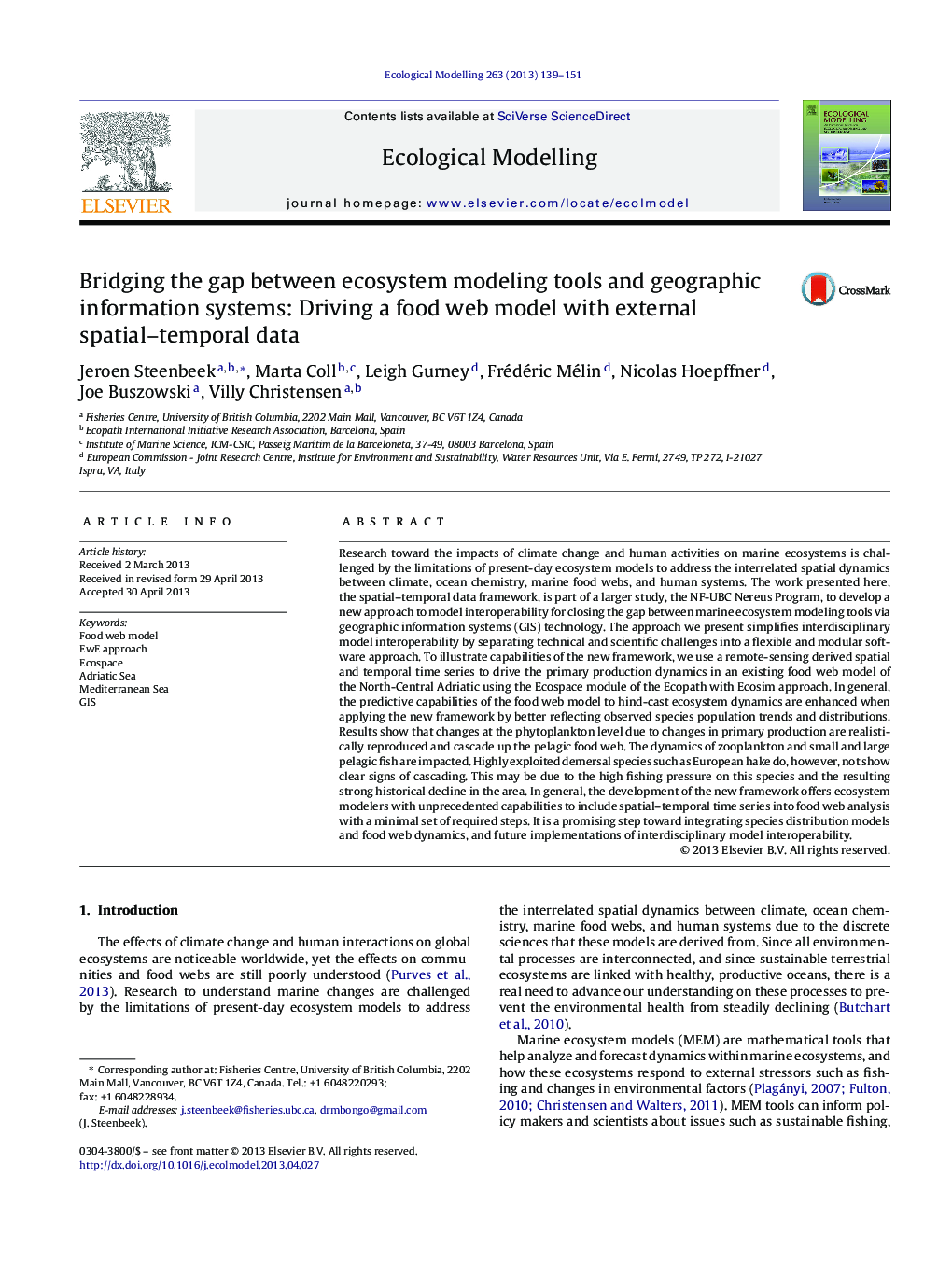| کد مقاله | کد نشریه | سال انتشار | مقاله انگلیسی | نسخه تمام متن |
|---|---|---|---|---|
| 6297173 | 1617483 | 2013 | 13 صفحه PDF | دانلود رایگان |
عنوان انگلیسی مقاله ISI
Bridging the gap between ecosystem modeling tools and geographic information systems: Driving a food web model with external spatial-temporal data
ترجمه فارسی عنوان
پرتو شکاف بین ابزارهای مدل سازی اکوسیستم و سیستم های اطلاعات جغرافیایی: رانندگی مدل وب غذا با داده های فضایی-زمانی
دانلود مقاله + سفارش ترجمه
دانلود مقاله ISI انگلیسی
رایگان برای ایرانیان
کلمات کلیدی
موضوعات مرتبط
علوم زیستی و بیوفناوری
علوم کشاورزی و بیولوژیک
بوم شناسی، تکامل، رفتار و سامانه شناسی
چکیده انگلیسی
Research toward the impacts of climate change and human activities on marine ecosystems is challenged by the limitations of present-day ecosystem models to address the interrelated spatial dynamics between climate, ocean chemistry, marine food webs, and human systems. The work presented here, the spatial-temporal data framework, is part of a larger study, the NF-UBC Nereus Program, to develop a new approach to model interoperability for closing the gap between marine ecosystem modeling tools via geographic information systems (GIS) technology. The approach we present simplifies interdisciplinary model interoperability by separating technical and scientific challenges into a flexible and modular software approach. To illustrate capabilities of the new framework, we use a remote-sensing derived spatial and temporal time series to drive the primary production dynamics in an existing food web model of the North-Central Adriatic using the Ecospace module of the Ecopath with Ecosim approach. In general, the predictive capabilities of the food web model to hind-cast ecosystem dynamics are enhanced when applying the new framework by better reflecting observed species population trends and distributions. Results show that changes at the phytoplankton level due to changes in primary production are realistically reproduced and cascade up the pelagic food web. The dynamics of zooplankton and small and large pelagic fish are impacted. Highly exploited demersal species such as European hake do, however, not show clear signs of cascading. This may be due to the high fishing pressure on this species and the resulting strong historical decline in the area. In general, the development of the new framework offers ecosystem modelers with unprecedented capabilities to include spatial-temporal time series into food web analysis with a minimal set of required steps. It is a promising step toward integrating species distribution models and food web dynamics, and future implementations of interdisciplinary model interoperability.
ناشر
Database: Elsevier - ScienceDirect (ساینس دایرکت)
Journal: Ecological Modelling - Volume 263, 10 August 2013, Pages 139-151
Journal: Ecological Modelling - Volume 263, 10 August 2013, Pages 139-151
نویسندگان
Jeroen Steenbeek, Marta Coll, Leigh Gurney, Frédéric Mélin, Nicolas Hoepffner, Joe Buszowski, Villy Christensen,
